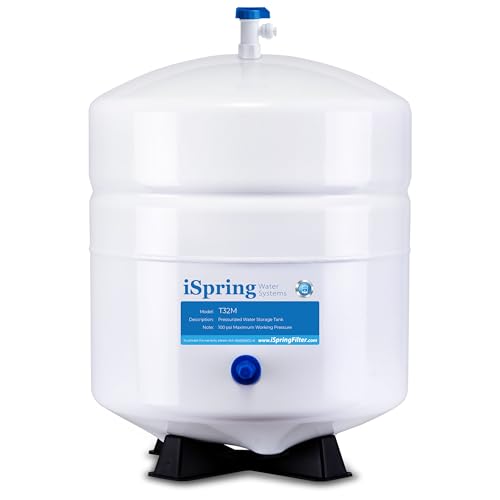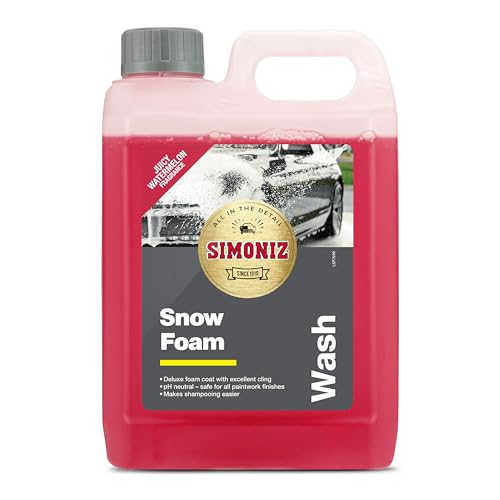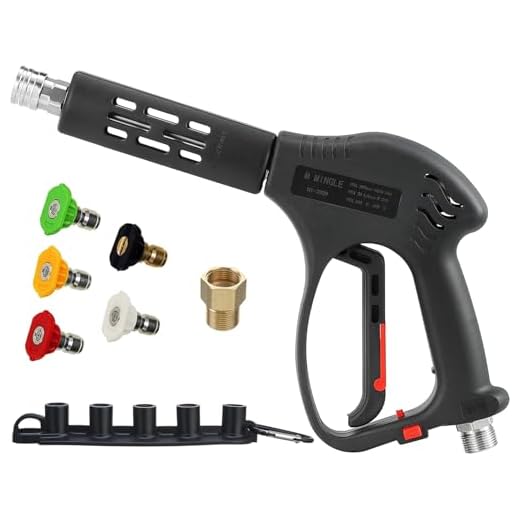
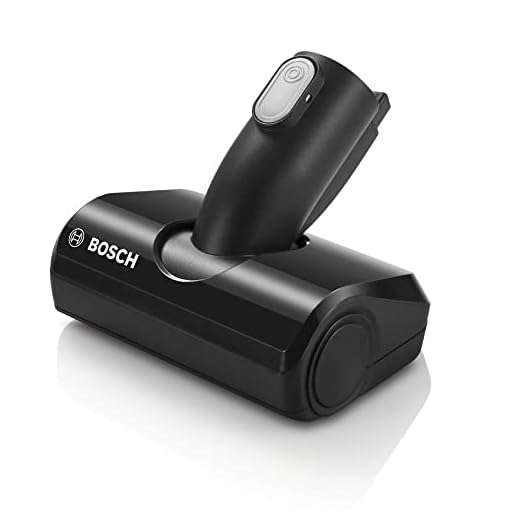
For optimal cleaning results on your patio or wooden structure, I highly recommend using a 25-degree nozzle. This particular angle strikes a perfect balance between power and gentleness, allowing you to effectively remove dirt and grime without damaging the wood. This ensures a more thorough cleaning while preserving the integrity of the surface.
Before you begin, make sure the nozzle is securely attached to your device. Conduct a test spray on a small, inconspicuous area to check for any adverse reactions. Adjust your distance; typically, a range of 12-18 inches from the surface offers the best results. If your structure has accumulated heavy stains or mildew, you might consider a brief application of a cleaning solution specifically designed for wood surfaces before rinsing with the water jet.
Finally, remember to work in sections, and avoid lingering too long in one spot to prevent surface damage. This technique not only ensures a cleaner finish but also extends the life of your outdoor wood features.
Recommended Nozzle Selection for Cleaning Outdoor Surfaces
To effectively clean outdoor surfaces, choose a 25-degree green nozzle. This attachment strikes a balance, offering sufficient power to remove grime without risking damage to the wood. For stubborn stains, a 15-degree red nozzle might be beneficial, but exercise caution to prevent surface harm.
Here’s a quick reference table outlining the appropriate nozzles for various cleaning tasks:
| Nozzle Colour | Degree Angle | Recommended Use |
|---|---|---|
| Red | 0° | Heavy-duty cleaning, stubborn marks (use cautiously) |
| Yellow | 15° | Removing tough stains, but can damage soft wood |
| Green | 25° | General cleaning, ideal for most outdoor surfaces |
| White | 40° | Delicate surfaces, such as windows and painted areas |
| Black | Soap | Applying detergent for enhanced cleaning |
Before you start, ensure the surface is prepped, removing any loose debris or large particles. Regular tests in a discreet section help assess effective cleaning without excessive force. Remember, maintaining the sprayer at an appropriate distance prevents damage while achieving optimal results.
Selecting the Right Nozzle for Wood Decks
For wood surfaces, a 25-degree nozzle is optimal. This choice offers a balanced spray pattern that effectively removes dirt without causing damage to the grain of the wood.
A 40-degree nozzle is also suitable for delicate cleaning tasks, such as regular maintenance. It disperses the water, minimising the risk of splintering or stripping the wood.
When dealing with stubborn stains or heavy mould, consider a turbo nozzle. This attachment combines the force of a narrow jet with a rotating motion, providing enhanced cleaning power without excessive pressure.
Always keep the spray nozzle at least 12 inches away from the wood to prevent gouging or other forms of damage. Test a small, inconspicuous area first to gauge how the surface reacts.
Using a cleaning solution specifically designed for wooden surfaces can help achieve better results, especially for deep-set stains. Ensure that the nozzle used is compatible with the detergent application–most units come with a low-pressure setting for this purpose.
In summary, the 25-degree and 40-degree nozzles are my go-to choices for wood surfaces, while the turbo option is best reserved for heavy-duty tasks. Adjusting the distance and testing beforehand can prevent costly mistakes.
Understanding Pressure Ratings for Deck Cleaning
When selecting the right cleaning machine, focus on the pressure ratings suited for wood surfaces. Ideally, a setting between 1200 and 2000 PSI is sufficient for effective cleaning without damaging the material. Lower PSI levels are advantageous for softer woods, while tougher species can withstand higher settings.
Understanding Pressure Levels
Here’s a breakdown of recommended settings based on wood type:
- Softwoods</ (e.g., pine, cedar): 1200-1500 PSI
- Hardwoods (e.g., oak, maple): 1500-2000 PSI
This range allows for the removal of dirt and grime while minimising the risk of splintering or gouging the surface. When cleaning, maintain a distance of approximately 12 to 18 inches from the wood to safeguard against concentrated pressure that could cause damage.
Factors Influencing Optimal Pressure
Several factors can influence the ideal pressure settings:
- Aging: Older decks with wear may require lower pressure to avoid further deterioration.
- Finish: If the wood is stained or sealed, using an appropriate PSI setting will help preserve the finish.
- Location: The environment may dictate more frequent cleanings or the need for more robust settings, especially in areas with heavy dirt or mould.
Understanding the interplay of these elements ensures a thorough cleaning process that protects and maintains the integrity of your timber surfaces over time. Adjusting the machine accordingly makes a significant difference in achieving optimal outcomes.
Techniques for Using a Pressure Cleaner on Wood Surfaces
Maintain a consistent distance of around 12 to 18 inches from the wood when applying the spray. This prevents damage while ensuring effective cleaning. Adjust your stance to be perpendicular to the surface to improve coverage and achieve an even finish. Conduct a test section in an inconspicuous area to evaluate the impact of the water force on the timber.
Angle and Movement

Utilise sweeping motions rather than stationary blasts. This technique helps avoid gouging or etching, which can occur with prolonged exposure to concentrated streams. Move in a horizontal fashion from one side to the other, then repeat vertically to ensure thorough cleaning. For intricate areas, an up-and-down movement can reach between boards and into corners effectively.
Technique for Stubborn Stains
.jpg)
For tough marks, like grease or mildew, apply a suitable cleaning solution before washing. Allow it to sit for several minutes, then rinse with water using the appropriate nozzle. Always remain cautious around edges and joints, where wood can be more vulnerable. Finish with an even pass over the area to blend the cleaned section with the rest of the timber.
Common Mistakes When Using High-Pressure Equipment on Wooden Surfaces
.jpg)
Avoid using a narrow nozzle that generates excessive force, as this can cause gouging and permanent damage to the wood. Start with a wider spray pattern and adjust as necessary.
Neglecting the Right Distance
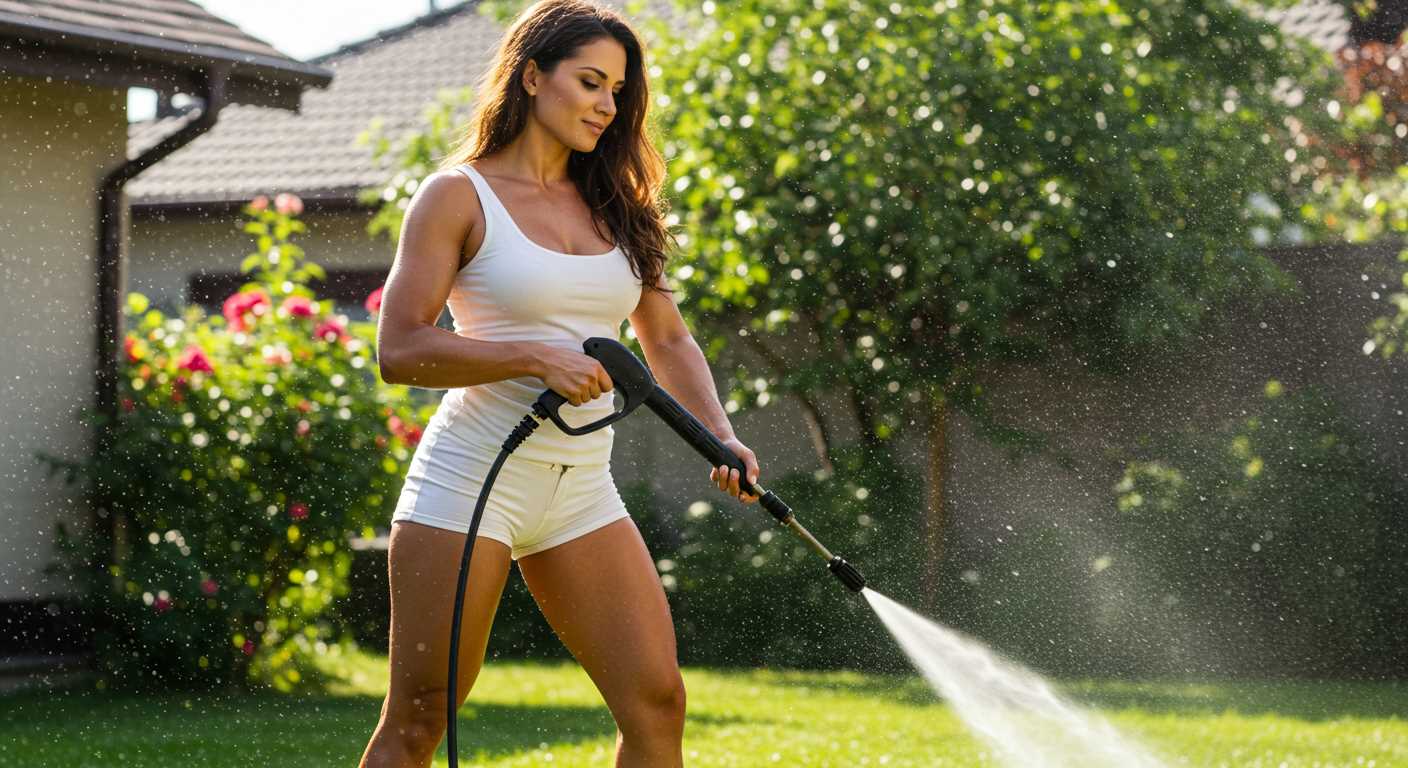
Maintaining the wrong distance from the surface can lead to inconsistent cleaning results or wood damage. Keep a minimum distance of 12 to 18 inches while cleaning. Here are some tips for maintaining the correct distance:
- Hold the gun at the same angle, approximately 45 degrees.
- Check your distance frequently, especially in areas with varying textures.
Ignoring Weather Conditions
Cleaning during extreme weather, such as high heat or rain, impacts results. Dampness can hinder surface drying and prolong drying time. Check forecasts and aim for mild conditions. Additional points to consider:
- Clean early in the morning or later in the evening when temperatures are cooler.
- Avoid working during intense sunlight to prevent quick drying that can lead to streaks.
Be mindful of surface types; not all wood is treated the same, and using the wrong approach can result in fading or splintering. Regular maintenance can prolong the life of your surfaces with proper techniques and equipment choices.
Maintaining Your Pressure Cleaning Nozzles for Wood Care
Regular upkeep of nozzles is critical for optimal performance during exterior surface maintenance. Cleaning and inspection should occur after each use. Ensure to remove any debris or contaminants; a simple rinse with water often suffices. For stubborn blockages, a soft brush can clear the opening without causing damage.
Storage Practices
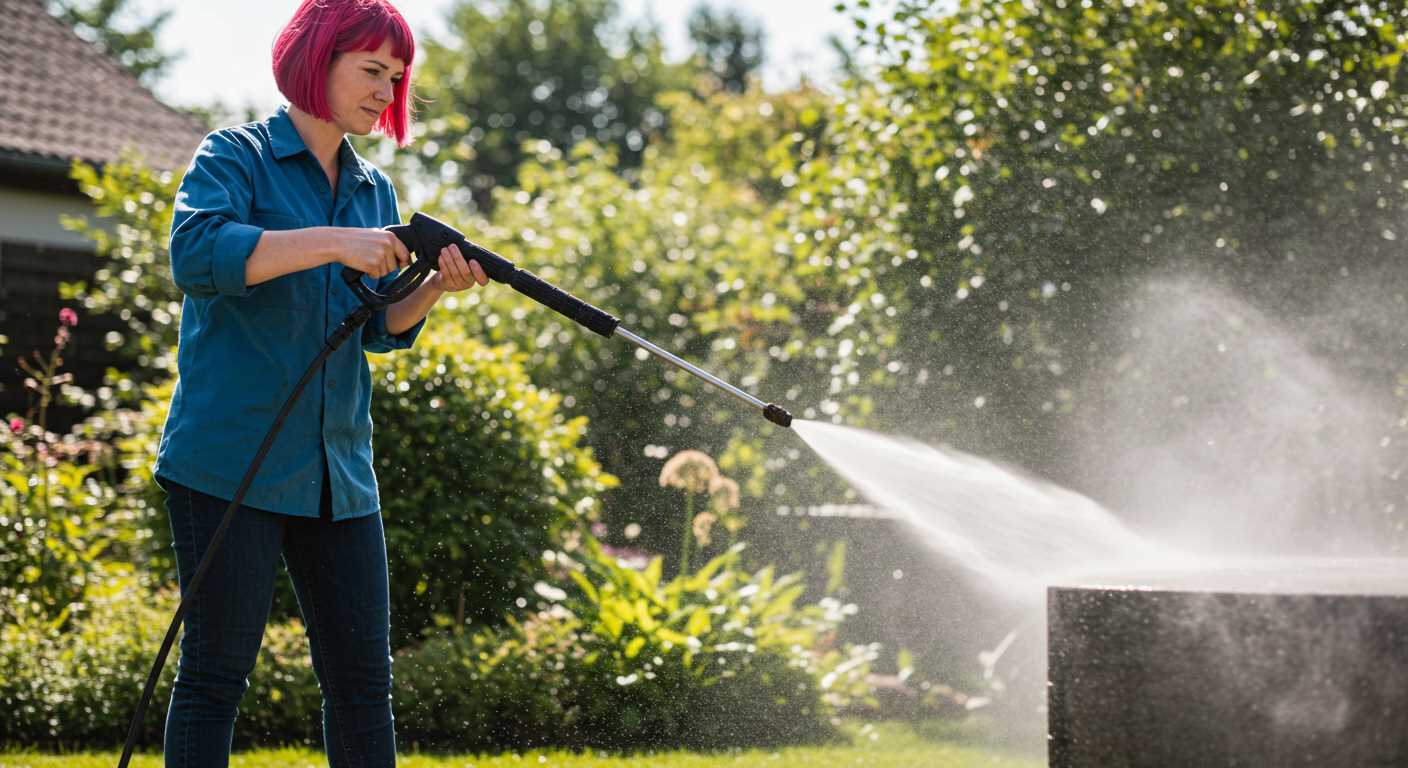
Proper storage significantly extends the life of these components. Always place nozzles in a dry, clean environment. Avoid leaving them attached to the machine, as prolonged pressure can deform seals and fittings, leading to leaks. Use a dedicated storage case or organise them in marked compartments to prevent loss.
Annual Maintenance Checks
Conduct thorough inspections yearly. Examine the tips for wear, cracks, or signs of corrosion. If any damage is visible, replacement is the best course of action. Consider testing the spray pattern in an open area; inconsistencies can indicate clogging or wear, requiring attention before the next task. Regularly replacing worn-out components is an easy way to ensure consistent efficiency.
Safety Precautions When Cleaning Outdoor Surfaces
Always wear safety goggles to shield your eyes from debris and potential projectiles when using high-pressure equipment. It’s essential to have closed-toed footwear with a good grip to prevent slips.
Protective Gear and Environment
Protective gear should include gloves to safeguard your hands from chemicals and water. Ensure that the area is clear of pets and children; keep them at a safe distance during the cleaning process.
Before starting, check the surface for loose boards, nails, or other hazards to prevent injuries. Ensure proper ventilation if using any chemical cleaners that might be harmful.
Electrical Safety Measures
Inspect electrical connections. Keep all cords and outlets dry to avoid shocks. Use extension cords rated for outdoor use to prevent electrical hazards. Always disconnect the unit when changing nozzles or making adjustments.
Lastly, maintain a safe distance from the surface being cleaned. Aim the nozzle away from yourself and others to avoid injury from the high-pressure stream.


